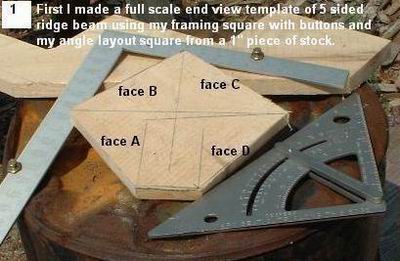Double Sided Planers Versus Carpet Feed Planers
A little insight into how two-sided planers work, and which machines are appropriate for which shops. January 17, 2011
Question
We are currently planing 5/4 rough sawn wood with a single sided planer. Now we would like to get a piece of equipment to help take out the twist that is in some of the boards we are planing. A few sales people have said we need a double sided planer but a few local wood shops have mentioned a moulder instead. What would some of you recommend? The wood we are planing is Cumaru anywhere from 3' to 16' long and up to 12" wide. Any help is greatly appreciated.
Forum Responses
(Solid Wood Machining Forum)
From contributor M:
You need a two sided planer. We own an import (Cantek) carpet type planer, and it really is amazing how well it flattens material. Both heads are carbide inserts and ours are actually in a chevron pattern, pulling chips to the middle.
From contributor J:
A moulder will do you no good in this situation. The carpet feed planer Contributor M mentioned would be something to look at. A jointer is ideal for removing twists but 16'x12" boards? Nope. The carpet feed is on the top. It is made up of hundreds of spring loaded fingers that can contour to the board. I believe this is the next best thing out there other than face jointing by hand.
From contributor U:
No. You need a Newman 282 series. A so called carpet planer is the most oversold machine there ever was. It is supposed to have the same action as a hand jointer. When that long board is in the feed rolls of the second head, the fingers no longer have control. It might as well be an all roll fed machine. So if the top and bottom heads are 24" apart, for example, and the bottom head has rolls controlling the lumber at that point, any board longer than 24" is not getting the benefit of the finger feed. By the way, I am not familiar with the import finger feed planers, but I can tell you that the Oliver, Porter and Northfield are maintenance hogs.
From contributor S:
I have an older Porter strato-plane. I'm rather fond of it because it will make a cupped board flat without splitting the material. I used to get aggravated when I would purchase FAS lumber from a local supplier. I would order the material surfaced to 15/16". You would be surprised how many boards would have splits from one end of the board to the other cause by the planer's roller system. I will say the Newman's 282's and 382's are both awesome machines. Wish I had one.
From contributor U:
The rubber tires dramatically reduce the splits. It might be a good idea to visit the planer mill and see why the boards are splitting. It could be the planer, especially if it is an old steel roll machine, or it could be the way the lumber is handled. I have stood on a line and watched board after board split. The boards were poplar, the outfeed belt was running around 400 ft. per minute and transferred onto cross chains. The boards were splitting when they hit the fence on the transfer chains. There are ways to split boards other than with planer rolls.
If you are processing huge amounts of lumber with very little labor involved, as in a large planing mill, a furniture factory cutting 20,000 bd. ft. per shift, etc., then lumber savings becomes a very big factor. If you are cutting three or four thousand or less and your product is purchased for its excellent workmanship, for instance antique reproductions, labor is your real cost, it is your real product. Lumber is a small part of the equation. I sold an unreal number of Newman 382 and 282 planers to the large manufacturers on the basis that they would improve lumber yield, and they did. I never had one single customer tell me that he was sorry that he made the change to the Newman. However, a small manufacturer selling a high labor, small raw material product will not get the same return, if any on an expenditure that large, unless you are able to pick up a used machine at a steal. That said, it should be remembered that you are cutting dollars, not lumber.
From contributor S:
I've heard of nothing but good things regarding the Newman 282's and 382's. I've also known of Oliverís and Porterís to be very productive. The spring loaded fingers are an advantage for cupped boards as the feed pressure is equalized across the board surface by the spring loaded feed toes. This allows the cup to be milled away rather than smashed flat by a solid roller thus causing a diagonal split. 382's do have tires which is more forgiving than the old Buss planers. I once had an Oliver 3170 double surfacer. It was a hoss of a machine but very expensive for replacement parts.
